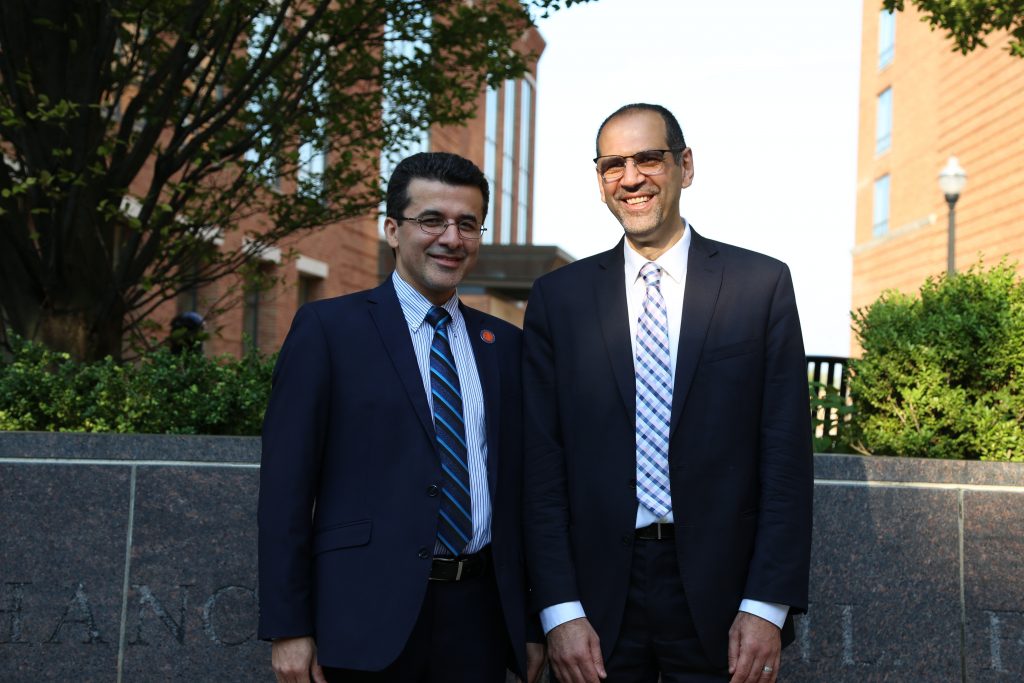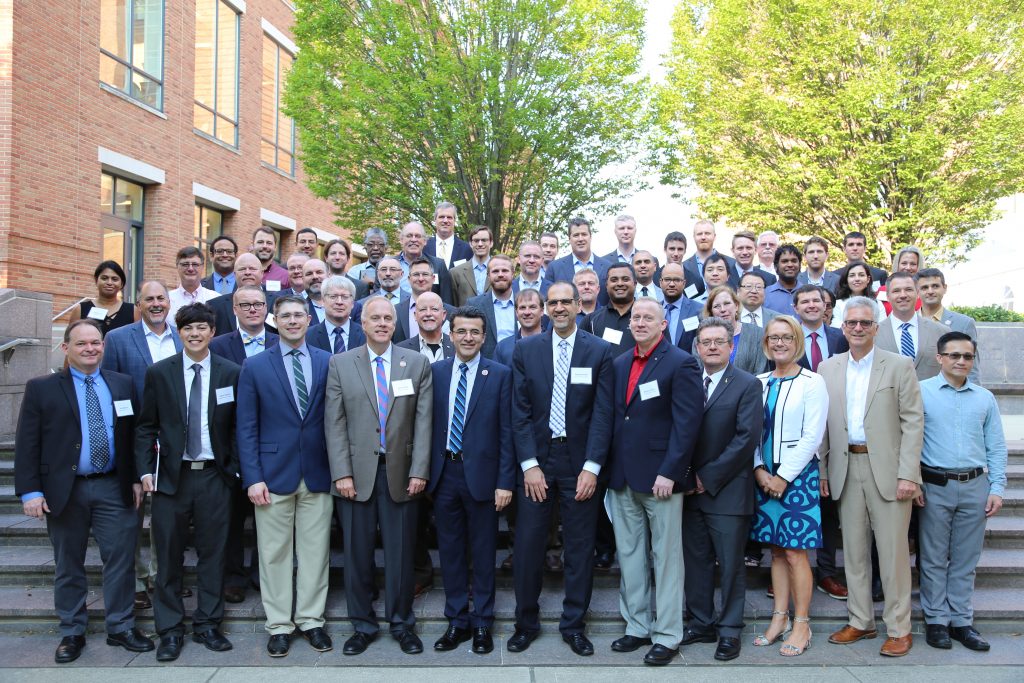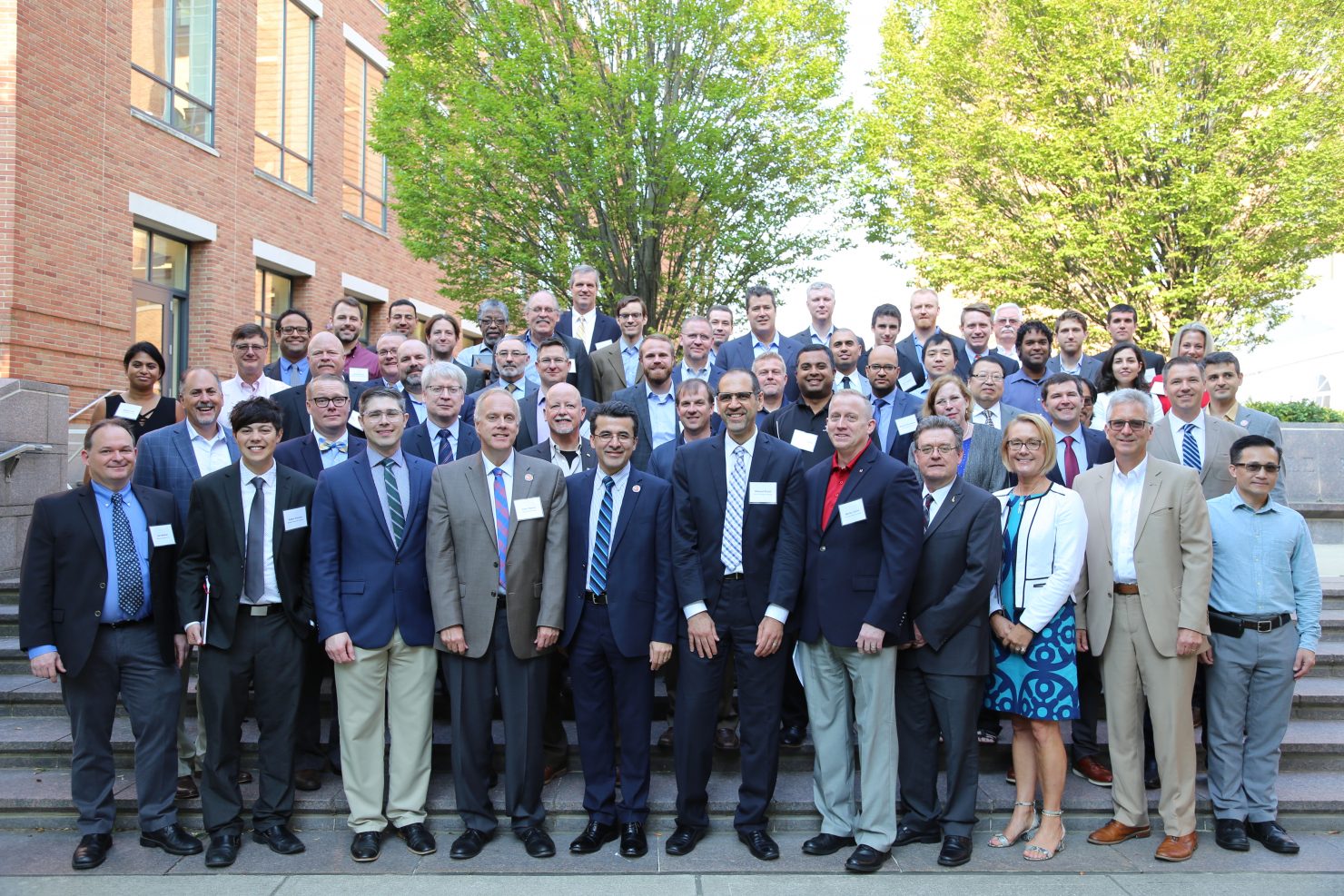
Dr. Mark Tehranipoor, Ph.D. (UF) and Dr. Waleed Khalil, Ph.D. (Ohio State), co-directors of the CYAN and MEST Centers of Excellence
A joint launch event for both these Centers of Excellence, with a grant value of more than $9 million in the first year, was held at The Ohio State on Friday, September 13.
Gainesville, Florida/Columbus, Ohio – The Herbert Wertheim College of Engineering at the University of Florida and The Ohio State University College of Engineering are collaborating as a close-knit team in two Centers of Excellence sponsored by the Air Force Office of Scientific Research (AFOSR), Air Force Research Laboratory (AFRL), and Nimbis Inc., a developer of collaborative cloud communities. Their dual goals are to advance the area of hardware-enabled cybersecurity through innovation and development of new Analog and Mixed Signal (AMS) domain security and to provide a comprehensive workforce training and education program in areas related to microelectronics design and security.
The combined UF-Ohio State team boasts strong expertise in all areas of hardware security for analog devices and systems, including design, simulation, fabrication, validation, testing, physical inspection, and analog emissions. The sponsors recognized the importance of these research and education efforts by awarding two joint-university Center of Excellence (COE) grants.
The Center for Enabling Cyber Defense in Analog and Mixed Signal Domain (CYAN) has received a $5 million grant from AFOSR as well as an additional $3.4 million from the joint universities. The center aims to attract additional funding through cooperation and partnership with national labs, defense industry and commercial partners. Hosted at Ohio State and UF, CYAN will be a joint COE conducting multidisciplinary research in the area of hardware-enabled cybersecurity through innovation and development of new AMS domain security. Dr. Waleed Khalil, Ph.D., associate professor of Electrical and Computer Engineering at Ohio State and Dr. Mark Tehranipoor, the Intel Charles E. Young Preeminence Endowed Chair Professor in Cybersecurity at UF, will serve as co-directors of the CYAN COE.
“The objective of the CYAN COE is to bring together expertise from each of the team universities to advance the science of analog security, analog emissions, and analog and radio frequency (RF) forensics,” said Dr. Khalil. “Experts in these areas will address some of the fundamental challenges and questions related to securing the design, fabrication, and operation of AMS technologies while also developing information fusion and predictive analysis algorithms of analog emissions and analog forensics,” said Dr. Tehranipoor.
The Air Force is particularly interested in growing research in this space because much of the focus and progress made to date in hardware security has been in the digital domain, which does not extend well to AMS systems. This leaves a major portion of electronics systems insecure, since the AMS side of electronic hardware comprises the highest share of the semiconductor and communication markets. Additionally, there is an increasing demand for a well-trained cybersecurity workforce in all government agencies, national labs, and industry sectors, making a comprehensive training effort in microelectronics security a critical necessity.
To address this demand, the two universities have additionally teamed up to develop a holistic training program in microelectronics design and security. The program, dubbed MEST (The National MicroElectronics Security Training Center) supported by Nimbis, will receive almost $1 million in the first year, with annual performance-based additions of up to $2 million in each of the following four years.
MEST, also hosted jointly at UF and OSU, will focus on developing a holistic, well-rounded training program in microelectronics security. Drs. Tehranipoor and Khalil will serve as co-directors of the MEST Center as well.

Group photo of the participants in the launch of the CYAN-MEST Centers of Excellence
“We will devise an eco-system of training modules and options with an emphasis on experiential learning to suit the needs of diverse groups of industry/government practitioners and students,” said Tehranipoor. “On-site, on-campus and on-line courses will be offered. Students who complete the necessary curriculum or course requirements will receive college credit, while practitioners will be awarded certificates of accreditation,” said Dr. Khalil.
“The centers will serve as a main platform to attract and retain a large pool of domestic graduate and undergraduate students to the field of AMS domain security,” said Dr. Khalil. “Students and engineers in our programs will be trained across multiple disciplines covering hardware security, algorithms, data analytics, as well as AMS design and measurements, which will allow them to have a large toolbox from which to solve diverse problems.”
“Ultimately, the engagement with our research on AMS domain security, in addition to the training courses we develop, will drive skills among our students and engineering practitioners that can enable new levels of cybersecurity in both analog and digital systems, which is vital to our military and industrial sectors,” Dr. Tehranipoor commented.
A joint launch event for both these Centers of Excellence, with a grant value of more than $9 million in the first year, was held at Ohio State on Friday, September 13. Drs. Khalil and Tehranipoor will present an overview of the two centers to members of the Air Force Research Laboratories (AFRL) from Wright Patterson Air Force Base, dignitaries from the AFOSR, leadership from the engineering colleges and research offices of both universities, and members of the industry consortium.
